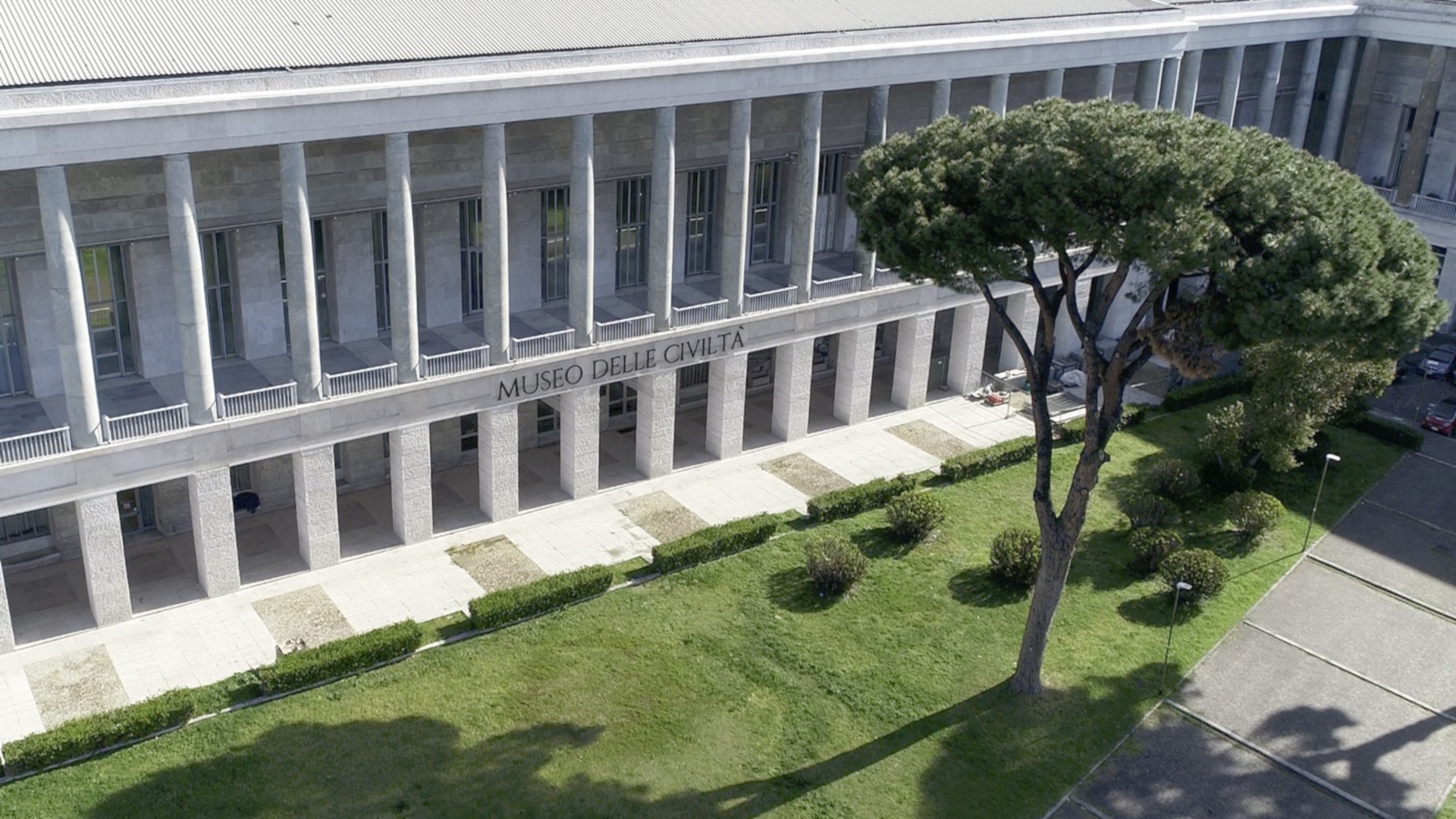
Over 2 million works of art and documents, from the early Stone Age to the present day, in a total space of about 50,000 square meters, including exhibition halls and storage rooms. Located in the EUR district, the urban-architectural project designed for the never-inaugurated 1942 Universal Exposition of Rome, the MUCIV - Museum of Civiltà was established in 2016 to bring together collections from initially separate national museums. Archaeology, anthropology, ethnography, art history and earth sciences are the disciplines covered by the museum, which has a somewhat encyclopaedic vocation.
The museum is housed in two monumental symmetrical buildings overlooking Piazza Guglielmo Marconi: the Palazzo delle Scienze (Palace of Sciences) and the Palazzo delle Arti e Tradizioni Popolari (Palace of Folk Arts and Traditions), both built in 1938. Interesting decorative elements embellish the typical rationalist square lines of the two buildings. The frescoes by Valerio Fraschetti, the large polychrome stained-glass window by Giulio Rosso (a collaborator of Marcello Piacentini and Gio Ponti), and the marble inlay by Mario Tozzi decorate, for example, the halls with high ceilings, white marble and wide staircases of the Palazzo delle Scienze. A marble bas-relief by Amerigo Tot can be admired in the Palazzo delle Arti e Tradizioni Popolari. The twin mosaics by Fortunato Depero and Enrico Prampolini adorn the exterior of the colonnaded propylaeum connecting the two buildings.
The Palazzo delle Scienze houses prehistoric, palaeontological, litho-mineralogical, African, American, Asian, Oceanic, early medieval, colonial and contemporary collections, gathered or acquired at different times in history and brought together in the Museo delle Civiltà between 2016 and 2022. The exhibits come from the Museo Nazionale Preistorico Etnografico, founded by archaeologist Luigi Pigorini in 1875 in the Palazzo del Collegio Romano; the Museo Nazionale d’Arte Orientale, inaugurated in 1957 in Palazzo Brancaccio, which displayed artefacts from the archaeological expeditions of the IsMEO-Italian Institute for the Middle and Far East, co-founded in 1933 by Giuseppe Tucci; the Museo Africano, closed in 1971; the paleontology and litho-mineralogy collections of ISPRA - Istituto Superiore per la Protezione e la Ricerca Ambientale (Higher Institute for Environmental Protection and Research); and the Museo Nazionale dell’Alto Medioevo, transferred here in 1967 from the National Roman Museum.
The two floors of the Palazzo delle Arti e Tradizioni Popolari display around 150,000 documents and works, as well as negatives and library materials, relating to Italian popular customs. The themes covered include popular memory, festivals and rituals (street performances and theatre, practices of magic and popular spirituality, games and entertainment), everyday life and living practices, traditional crafts, and agricultural, pastoral and maritime work. One of the symbols of the museum is the extraordinary collection of nativity scene figures from various Italian regions, which offer a fundamental contribution to understanding the historical and anthropological phenomenon of the nativity scene, an Italian art form par excellence. Throughout the tour, visitors are accompanied by three emblematic figures of the museum: anthropologists Lamberto Loria (1855-1913) and Annabella Rossi (1933-1984) and collector Gennaro Evangelista Gorga (1865-1957).
The museum houses a wide variety of objects of non-European origin. In line with developments in the most important European and international ethnographic institutions, the museum has therefore launched a series of projects aimed at reconstructing, in a dialogical and participatory manner, the biographies of all the collections. Research into the museum’s collecting history is also reflected in the ongoing progressive rearrangement of all the collections and their contextual re-cataloguing and digitization.
Information
Last admission 18.30Monday closedFor updates please check the > official website.
 Condividi
Condividi
Locations
To find out about all accessibility services, visit the Rome accessible section.











































